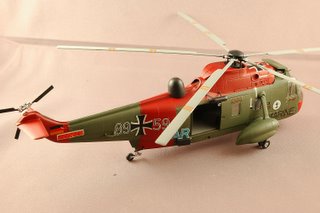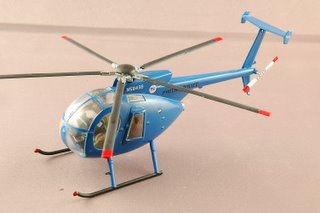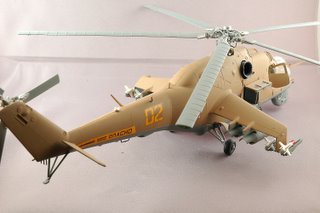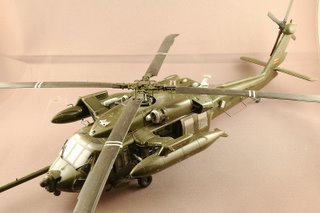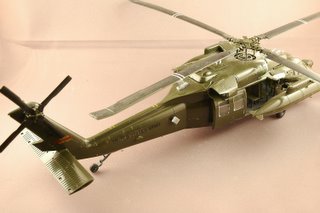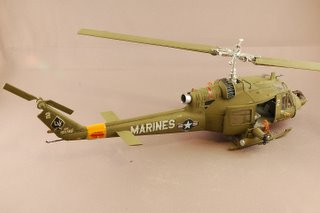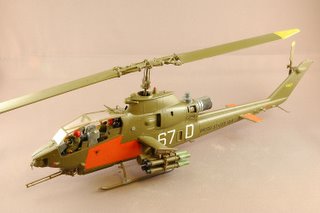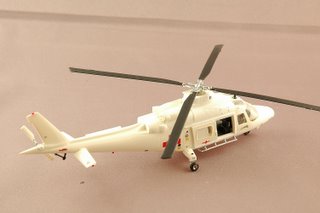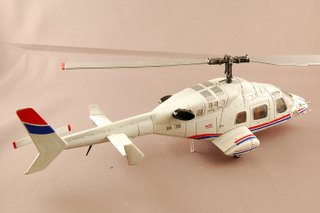
The US Army's AAH (Advanced Attack Helicopter) programme is the biggest Western programme of its kind: it calls for an aircraft capable of operating day and night in all weathers, which can be based with front line troops if necessary. Of the two contestants, the Bell YAH-63 and the Hughes YAH-64, the latter was the first to become airborne; it flew in September 1975, and two prototypes of each helicopter were delivered to the Army for comparative trials in May 1976. When these were completed in December of that year, the Hughes aircraft was chosen and three more were built, complete with electronics and armament.
The AH-64 is an aggressive-looking helicopter seating two in tandem, with a semi-monocoque fuselage of narrow cross-section. The copilot/gunner sits in the rear seat, which is raised and has good all-round visibility. The two 1690shp General Electric T700-GE-701 turbines are mounted on either side of the fuselage, behind the rotor transmission, in two separate nacelles. The four-blade metal rotor is of the articulated type with the blades angled at 60°/120° in relation to each other to reduce noise levels. The tail unit, which was modified during the aircraft's second development phase, includes an all-moving tail plane positioned slightly above the tail boom and a vertical fin to replace the earlier T-tail of the prototype. The tailwheel landing gear is fixed.
Model Kit Review:
http://www.fortunecity.com/meltingpot/portland/971/Reviews/choppers/ah-64a_48.htm
Other information:
http://www.boeing.com/history/mdc/ah-64.htm
http://www.aviationexplorer.com/apache_facts.htm





